A Required Minimum Distribution (RMD) from a retirement account is exactly what it says – required, mandated, a “must-do”. It’s a specific, calculated amount that must be distributed from the account each year you live beyond age 73. Taxes are paid on the amount of the distribution.
That’s the simple explanation. The United State Government and its tax collecting arm, the Internal Revenue Service, do not tend towards anything simple, so there are lots of rules and regulations and caveats around Required Minimum Distributions. Also, the rules can change, as they did at the end of 2022 with the passage of the Secure Act 2.0. We’re not going to get into most of that here. Specifically, this blog does not cover required distributions from retirement accounts that you have inherited from someone else – that’s a separate and longer post. This is intended to be a very basic explainer of what you need to know. Your BentOak Capital advisor will be able to discuss your personal situation in much more detail; please contact us (817-550-6750 or info@bentoakcapital.com if you want to have a personalized conversation).
The (very simplified) IRS rules around required minimum distributions are as follows:
- An IRA is an “Individual” Retirement Account, not a joint account. If you are married and each spouse has an IRA, each spouse has their own required minimum distribution. You cannot combine them.
- The RMD amount of each IRA or other tax-qualified account (such as a 401k) is based on the balance of those accounts as of December 31 of the previous year.
- The value of all traditional IRA accounts is combined to calculate your RMD for the year. (1) Let’s assume Joe turns 73 this year and must begin taking RMDs. He has two IRAs.
| Accounts | 12/31 prior year balance | Required Minimum Distribution |
| Joe’s IRA at BentOak Capital | $450,000 | $16,981.13 |
| Joe’s IRA at Somewhere Else | $200,000 | $7,547.17 |
| Total IRA balance | $650,000 | Total RMD = $24,528.30 |
- The amount you must take is based on your age. In the year in which you turn 73(2), the amount you must distribute from the IRA is roughly 3.8%. By the time you reach age 80, your distribution rate has jumped to almost 5%.
- You can always take more than the required minimum amount. You cannot take less.(3)
- You have the option to take separate distributions from each of your traditional IRAs, or you can take 100% of your total required minimum distribution from just one of the IRAs. Most people choose one account and take the total combined RMD from there. In the example above, Joe can take all $24,528 of his required distribution from either IRA, or he can take a portion of the total amount from each.
- The penalty for not taking the full amount of your RMD by December 31 each year is 25% of the non-distributed amount.(4) For example, if you are required to distribute $10,000 and only take $5,000, then your tax penalty is $1,250. You still must distribute the other $5,000.
There is no requirement for what happens to the IRA distribution once you take it out of your IRA. Your distributions can go straight to your bank account – this is a very common choice. If you do not need that money to help fund your normal retirement lifestyle, you can always reinvest it in a taxable investment account.
These distributions are considered ordinary taxable income, exactly like W-2 wages and Social Security. Just like wages and Social Security, you can withhold a certain amount of your required distribution, essentially pre-paying the taxes you will ultimately owe.
If you are age 73 or older and are currently taking regular distributions from your IRA to fund your normal retirement lifestyle, those distributions count towards your RMD. If the total of your annual distributions is greater than your RMD, you do not have to change the amount of your regular distribution. Remember, this is a mandated minimum amount to distribute – not a maximum.
If the total of your annual IRA distributions is less than the required minimum, you have a few options. One, you can take a lump sum during the year that makes up the difference. Two, you can increase the amount of your regular distributions.
If the required minimum distribution is more than you need to satisfy your normal retirement lifestyle, you can choose to give away enough to charity through a Qualified Charitable Distribution in order to satisfy the required minimum. As a bonus, you do not pay taxes on any amount given to charity in this way.
There is much more that can be said about required minimum distributions. We’ve only scratched the surface – and only about the actual mechanism of distributions when they are required. There is actually a significant amount of planning that can take place in the years leading up to age 73, including some options that may reduce your required distributions (and therefore your income tax).
If you are nearing age 73 and would like to talk with a BentOak Capital advisor about how this will work for you personally, please contact us. If you are retired but still a few years away from beginning RMDs, give us a call and we can work with you on a proactive strategy that may save you on future taxes while extending the life of your portfolio by years.
(1) If you have a 401k account and you are no longer working for that company, you must take a required minimum distribution from that account as well – but it cannot be combined with your IRA accounts. The distribution must come from the 401k itself.
(2) I’m simplifying drastically in the main text. Technically, you do not have to take your first RMD the year you turn age 73. You actually have until April 1 of the following year (the year you would turn 74) to make your very first required minimum distribution. You will still have to take your age 74 distribution by December 31 of the same year. This results in two taxable distributions in the same year – a little less than 8% of your total IRA balance. This may be a good idea for some people, less of a good idea for others, depending on your overall tax situation.
(3) Or rather, you can take less but you shouldn’t, because you’ll face some hefty penalties from the IRS.
(4) With the exception of your age 73, see footnote 2, above. Additionally, the 25% penalty can potentially be reduced even further to 10% under certain circumstances and within a certain timeframe.
Please remember to contact BentOak Capital (“BentOak”), in writing, if there are any changes in your personal/financial situation or investment objectives for the purpose of reviewing/evaluating/revising our previous recommendations and/or services, or if you want to impose, add, to modify any reasonable restrictions to our investment advisory services, or if you wish to direct that BentOak to effect any specific transactions for your account. A copy of our current written disclosure Brochure discussing our advisory services and fees continues to remain available upon request or at www.bentoakcapital.com.
This information is not intended to be a substitute for specific individualized tax advice. We suggest that you discuss your specific tax issues with a qualified tax advisor.
The opinions voiced in this material are for general information only and are not intended to provide specific advice or recommendations for any individual. All performance referenced is historical and is no guarantee of future results. All indices are unmanaged and may not be invested into directly.
Securities offered through LPL Financial, Member: FINRA/SIPC. Investment advice offered through BentOak Capital, a registered investment advisor and separate entity from LPL Financial.







